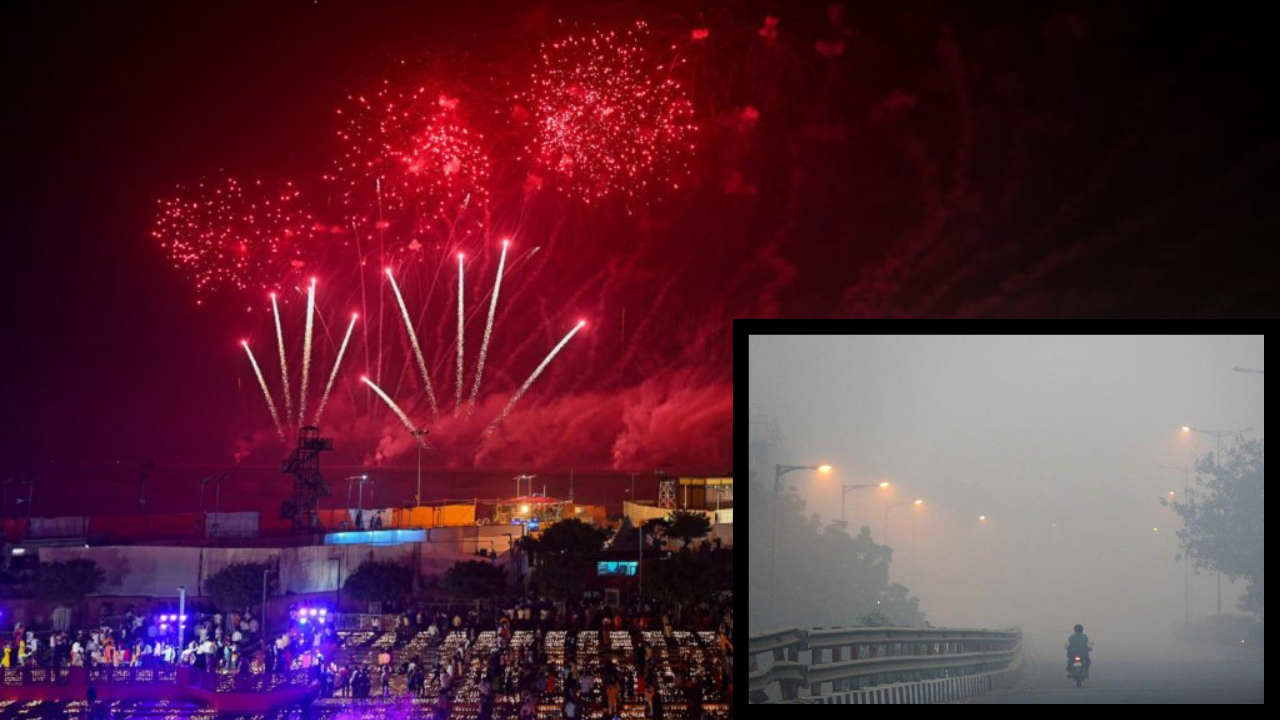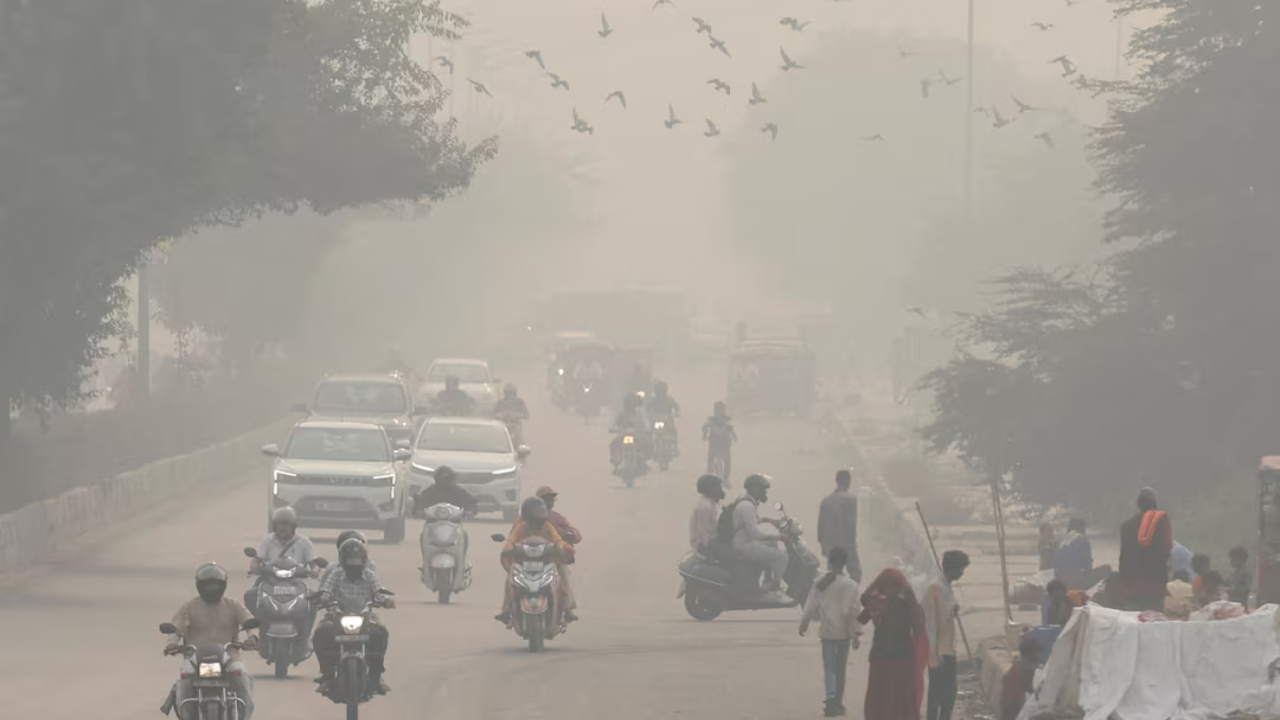 English
English

Fireworks may light up the night, but how long does the toxic haze from Diwali linger in the air? This article delves into the duration of post-festival pollution, its health implications, and the role of biomass burning in air quality recovery.

A Night of lights, a day of haze.
New Delhi: Diwali, the festival of lights, is celebrated with grandeur across India. However, the bursting of firecrackers during the festivities leads to a significant spike in air pollution, particularly in urban areas. While the visual spectacle is short-lived, the environmental impact extends beyond the night.
Studies have shown that on Diwali night, PM2.5 levels can soar to hazardous heights. In cities like Delhi, PM2.5 concentrations have been observed to exceed the National Ambient Air Quality Standards (NAAQS) by up to 875% during the festival.
This surge is primarily due to the combustion of firecrackers, which release fine particulate matter into the atmosphere.
The lingering effects of Diwali-related pollution are a topic of concern. While some studies suggest that air quality returns to pre-festival levels within 24 hours, others indicate that pollutants can persist for up to 48 hours, especially in regions with low wind speeds and high atmospheric moisture. For instance, in Mumbai, the Air Quality Index (AQI) dropped to 140 ahead of Diwali, with many suburbs experiencing poor AQI levels.
Diwali 2025: Ganesh Puja is incomplete without Goddess Lakshmi! Click here to learn why
While firecrackers contribute to the immediate spike in pollution, other factors play a significant role in the prolonged degradation of air quality. Biomass burning, including stubble burning in neighboring states, contributes to the sustained high levels of particulate matter in the days following Diwali. A study by IIT Delhi found that biomass burning emissions, rather than fireworks, drive the poor air quality in the days after Diwali.

On Diwali night, PM2.5 levels can spike up to 16 times the normal levels.
The elevated levels of pollutants pose serious health risks, particularly for children, the elderly, and individuals with pre-existing respiratory conditions. Doctors advise continued precautions for 24–48 hours after the fireworks have ceased. Patients with Chronic Obstructive Pulmonary Disease (COPD) are especially vulnerable and should avoid exposure to polluted air during this period.
To reduce the environmental and health impacts of Diwali celebrations, experts advocate for eco-friendly alternatives. Replacing traditional firecrackers with green crackers, which release up to 30% less particulate matter, can help mitigate pollution levels. Additionally, promoting sustainable celebration methods such as lighting diyas, creating organic rangolis, and organizing community lights can preserve the festive spirit without harming the environment.
While Diwali is a time for joy and celebration, it is crucial to acknowledge and address the environmental impact of the festivities. By adopting eco-friendly practices and being mindful of the pollutants released during the celebrations, we can ensure that the festival remains a time of happiness without compromising the health of our planet and its inhabitants.